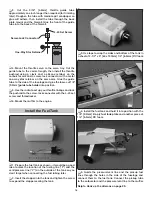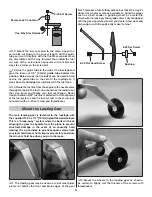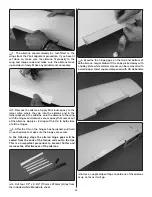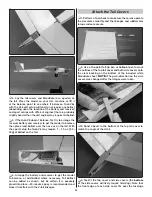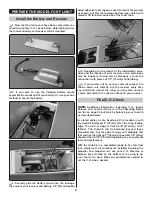
32
Balance the Model Laterally
❏
1. With the crankshaft at the bottom of its stroke (so
the piston is not under compression and the crank shaft
can move freely), lift the model by the spinner nut with
the tail on the workbench so the model can rotate about
the crankshaft. The weight and position of the engine
will undoubtedly cause the Quik-V6 to rotate to the right
requiring ballast in the left tip.
❏
2. There are several ways to add tip weight, but one
way is to cut a pocket into the tip, glue in the lead required,
and then seal with MonoKote.
Set the Control Throws
Like many aspects of model setup for pylon racing, the
control throws are a matter of personal taste. But the
throws specifi ed below will be a great starting point and
should allow you to be comfortable enough to get the
plane low and on the course immediately after the initial
trim passes:
These are the recommended control surface throws:
ELEV
A
TOR
HIGH RATE
LOW RATE
Up and
Down
7/32"
[ 6 mm]
10.2°
Up and
Down
5/32"
[ 4 mm]
7.3°
Up and
Down
7/32"
[ 6 mm]
10.1°
Up and
Down
5/32"
[ 4 mm]
7.2°
Right
& Left
7/32"
[ 6 mm]
10.2°
Right
& Left
1/8"
[ 3 mm]
5.8°
R
UDDER
AILERONS
NOTE:
The throw values provided in 1/32" increments
may be rounded up to the nearest 1/16" if it’s easier for
you to measure.
❏
1. Support the fuselage so the model will be level,
then measure and set the throws. The ruddervators are
measured with the ruler perpendicular to them.
❏
2. While programming the radio, don’t forget to set your
Failsafe
so when you turn off the transmitter (simulating
loss of signal) the throttle/fuel cut servo causes the engine
to stop.

